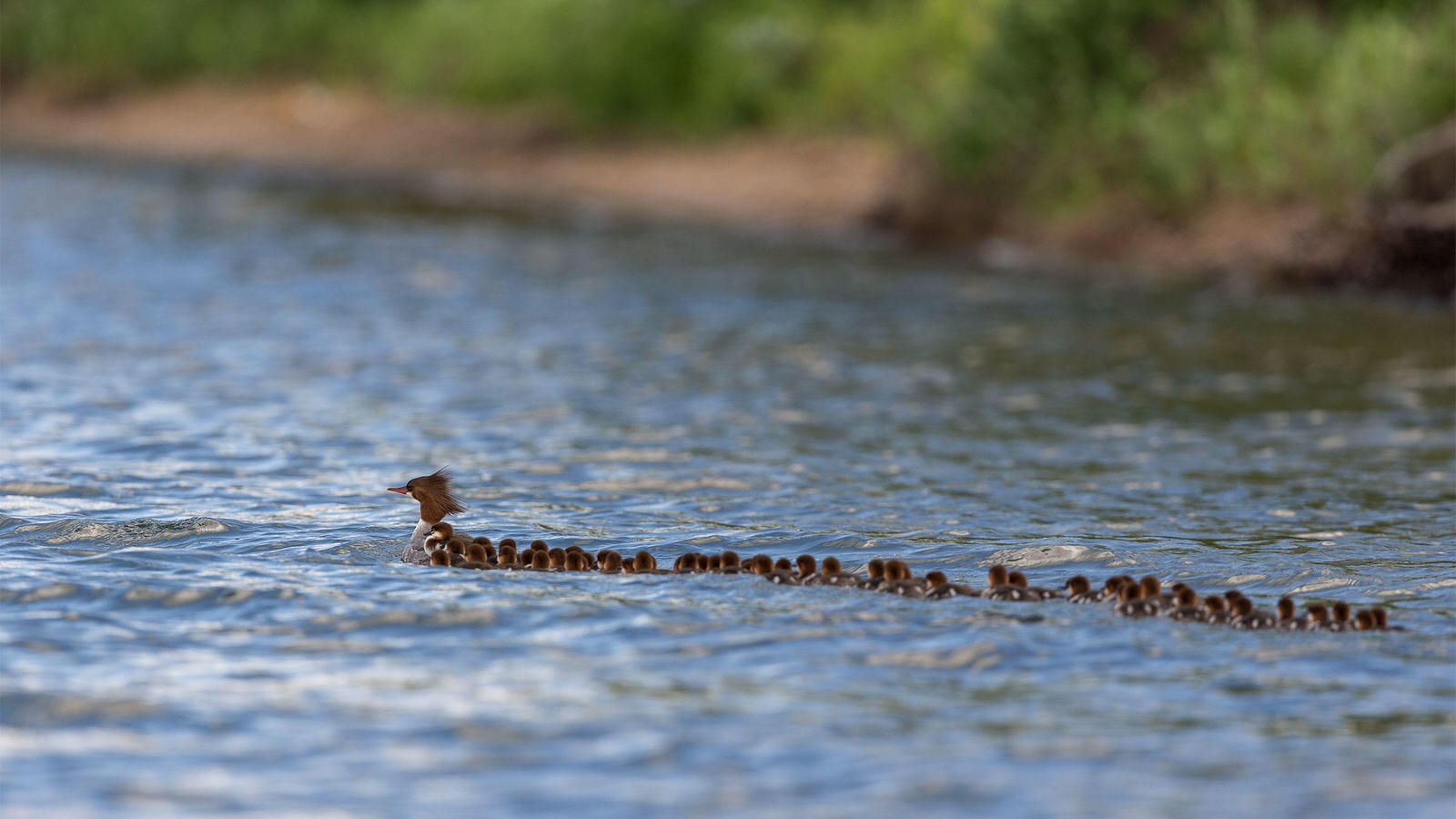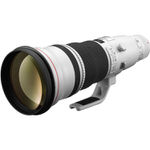
The Incredible Story of 50… No, Wait, 76 Ducklings: Images by Brent Cizek
When amateur wildlife photographer Brent Cizek ventured out June 27 for an afternoon scouting excursion on Lake Bemidji, Minnesota, he brought just one camera and one lens with him. He’d intended to simply check out the lakeshore in preparation for future shoots at the location, and maybe grab a photo or two of a mallard he’d previously spotted in the area.
Then, he caught a glimpse of a spectacular sight – a female common merganser, swimming along with more than 50 tiny ducklings in tow.
Brent told the Audubon Society that he fought strong winds and powerful waves as he snapped away, pausing occasionally to adjust his trolling motor. He was praying that at least one frame would be in focus – and “luckily enough,” he said, “just one picture turned out.”
He shared the image on Twitter, where it was picked up by the Audubon Society and quickly went viral – the original capture of this “mom of the year” has been retweeted more than 4,000 times. Since then, Brent has been posting regular updates on the busy mother and her growing family.
MAMA MERGANSER! I was able to track down the now famous Lake Bemidji Common Merganser that has an adopted brood of over 76 babies! I love the story that these photos tell.
Full gallery: https://t.co/wg8xioJBIG#audubonsociety #minnesota #bemidji #duck pic.twitter.com/c0Jycct4HX
— Brent Cizek (@brentcizekphoto) July 17, 2018
The story has even been covered by National Geographic, which offers a bit of an explanation for how the large family came to be.
While Brent’s interest in wildlife photography is relatively new – he only started pursuing the hobby about two years ago – this isn’t the first time he’s come across a duck with so many little ones to care for. According to the Audubon Society, a big brood is fairly common among common mergansers. Typically, females will lay around a dozen eggs at a time and, occasionally, will lay a few of these eggs in the nests of other females to increase the chance that their offspring will survive – a bit of an insurance policy.
However, “Mama Merganser” is a more unique case. The Audubon Society’s assessment is that this female has likely adopted ducklings that had been separated from their own mothers, possibly due to the area’s late spring. The lost youngsters will instinctively latch onto another common merganser, who looks just like the mother they had imprinted on, and the adult females are unable to determine which ducklings are biologically theirs.
But according to Brent, the young birds are thriving with their adopted mother – and the Audubon Society says locals in the Bemidji, Minnesota, area have also reported seeing the large family passing through town.
Spent another morning with the mergansers. They are growing so fast. They continue to venture further out on their own, but as soon as Mama Merganser starts heading somewhere, they all quickly follow suite. Count is still at 70+. pic.twitter.com/MkIRc0wUnZ
— Brent Cizek (@brentcizekphoto) July 23, 2018
BABY MERGANSERS! There’s a new mom on the lake with 14 chicks. How cute are they?!?
Update on Mama Merganser’s crèche: They have now joined together with the 30 adult hens on the lake and seem to be all sticking together now.
Full gallery: https://t.co/lxCXEDMfOO pic.twitter.com/0bGxvmtOwk
— Brent Cizek (@brentcizekphoto) August 4, 2018
Camera & Settings

Canon EF 600mm f/4L IS II USM
Aperture Range: f/4 to f/32, Optical Image Stabilizer, Two Fluorite & Four Aspherical Elements
Brent’s remarkable photos of the now-famous feathered super mom were shot on a Canon EOS-1D X using a Canon EF 600mm f4L IS II USM lens, with the aperture set at f/5.6 and an ISO of 800 for an exposure time of 1/1000. More than his equipment or camera settings, though, what really helped Brent capture this impressive scene were good instincts, quick reflexes, and a little bit of luck.
All of Brent’s photos of the Lake Bemidji ducks can be found on his website, in the wildlife gallery. And, if you’d like to see more images of exquisite birdlife, check out the winners of the 2018 Audubon Photography Awards.














